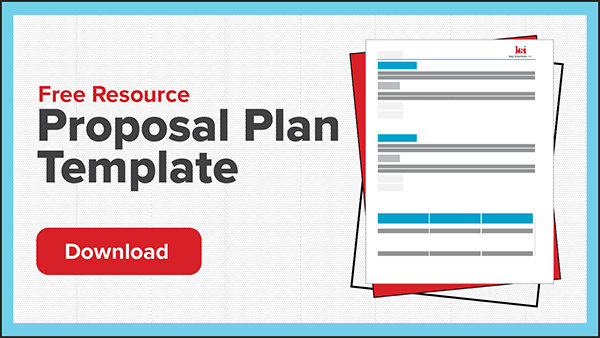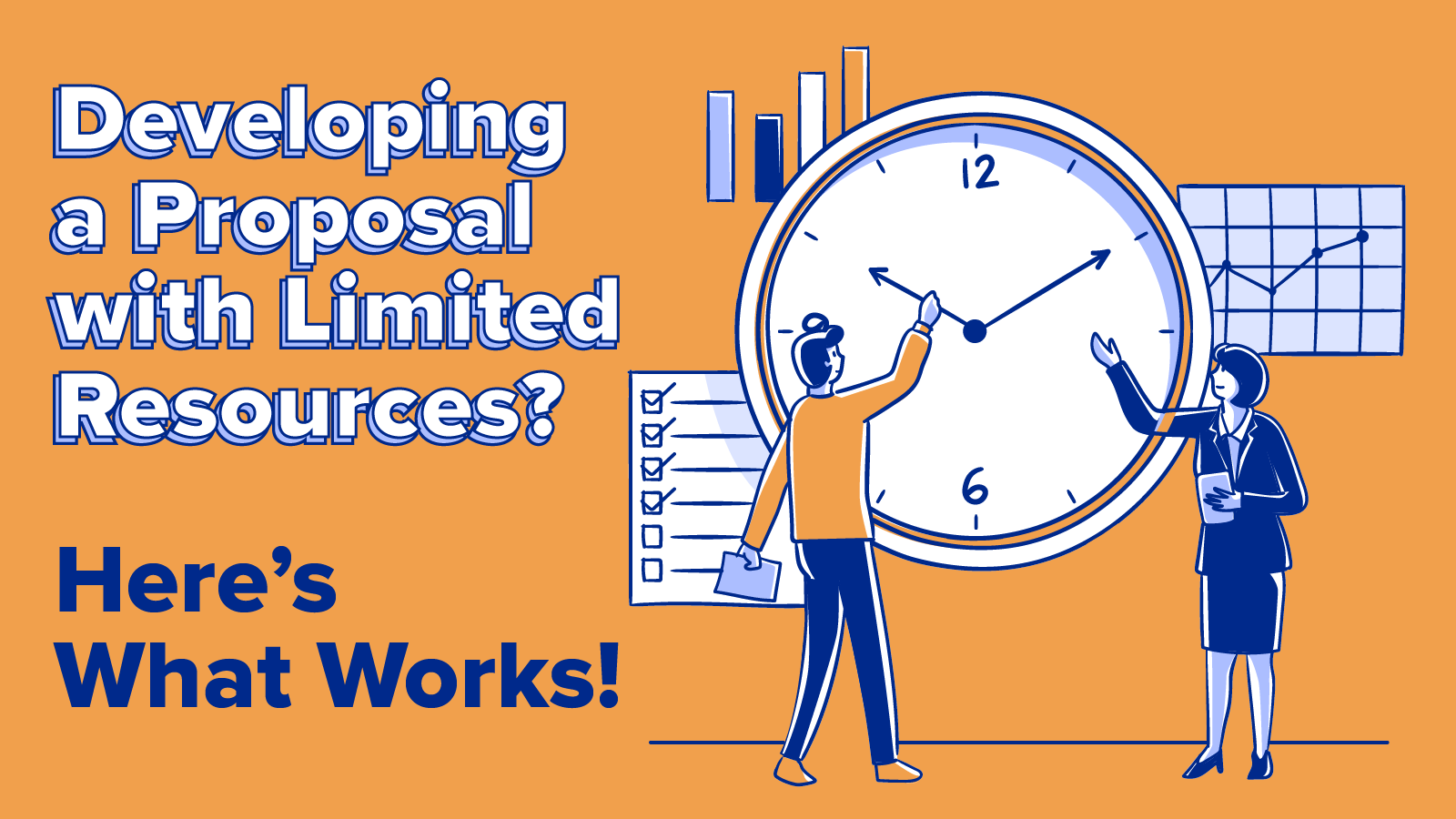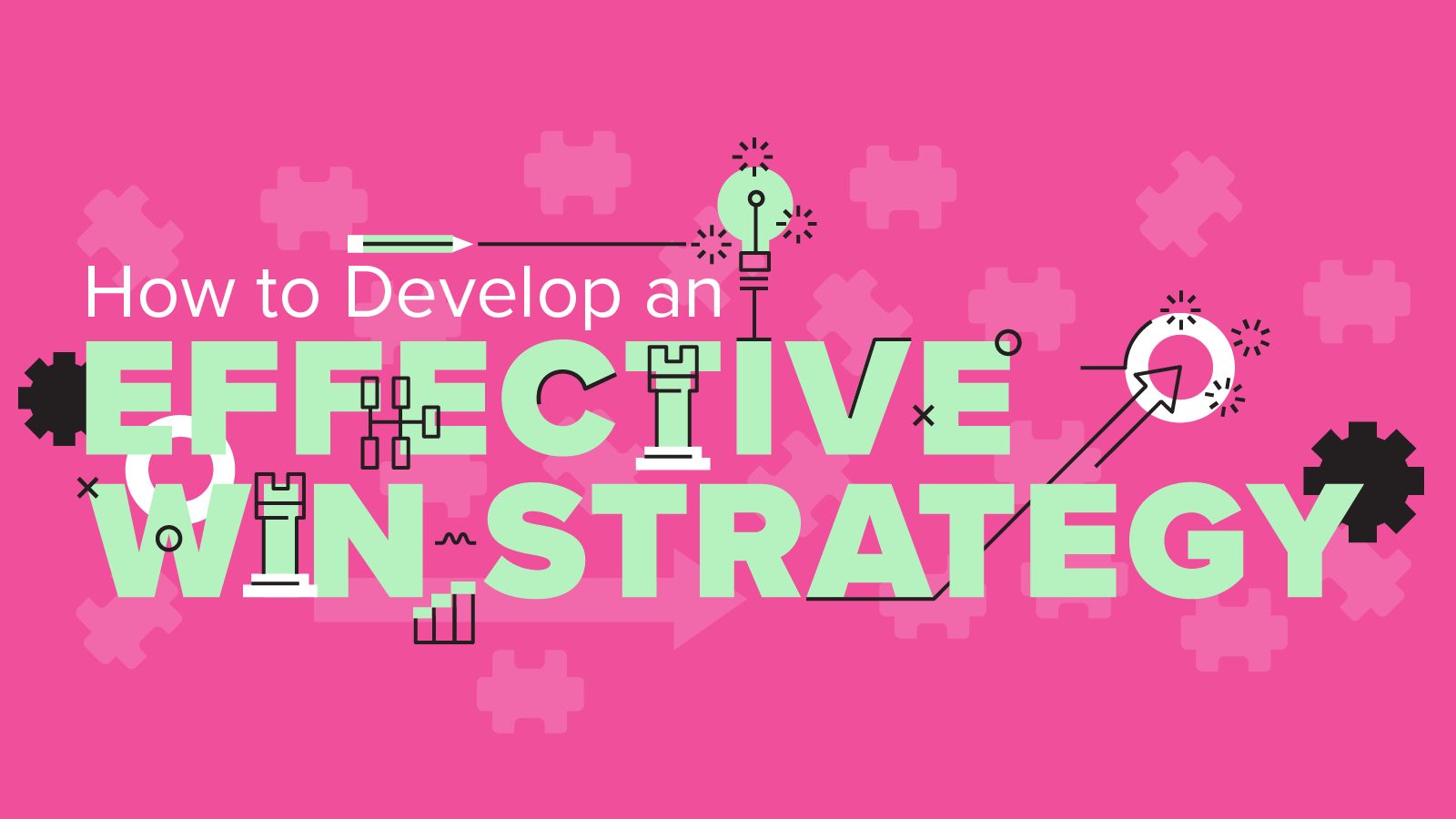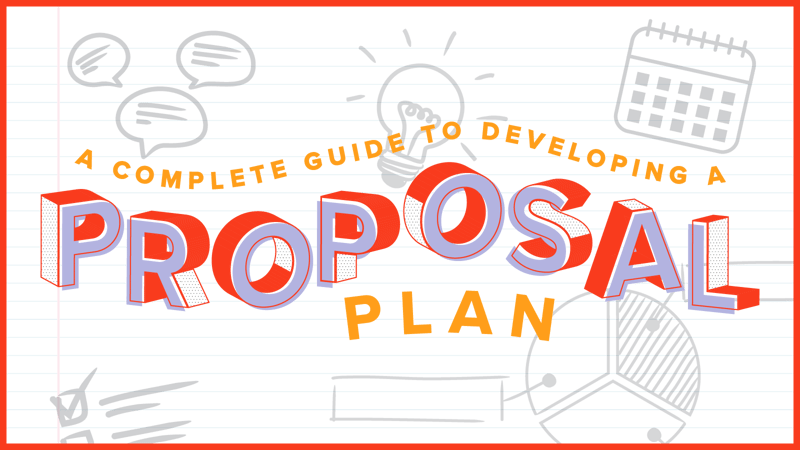
When it comes to developing a successful proposal response, having a Proposal Plan in place is essential.
So, what is a Proposal Plan?
A Proposal Plan is the foundation to a successful proposal—it lays out the structure of your response to the Request for Proposal (RFP). In addition, it helps align the strategic messaging and customer-focused language to the appropriate sections.
The Proposal Plan is a beneficial and critical tool at the beginning of stages of proposal development as well as after submission. It gives the proposal development team a strong, deliberate starting point and a clear path forward, and enables easy evaluation of the proposal upon submission.
What is considered a successful proposal?
In order to submit a successful response, it is important your proposal checks the following boxes:
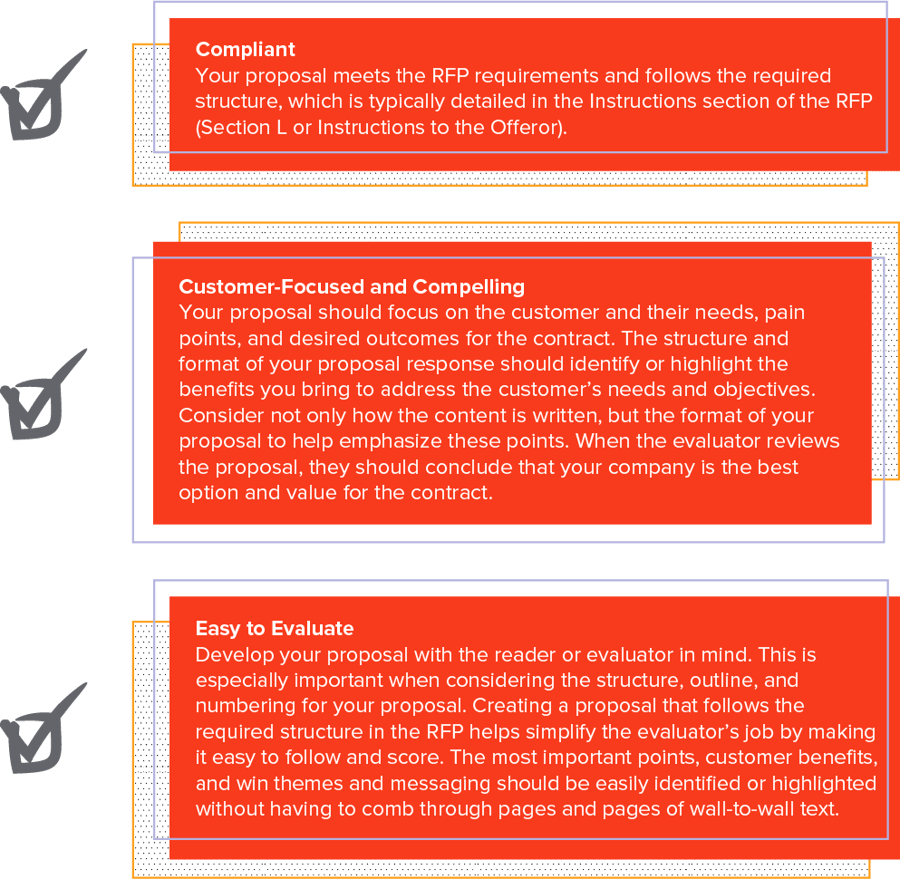
Developing a Proposal Plan for a Winning Proposal
To help you begin developing a Proposal Plan, think of it as an equation. Combine the management and proposal development information and tasks with the strategic components and intelligence of the opportunity, as well as with the structural aspect of the proposal response.
These three pieces combined create a sound starting point for your Proposal Plan and support a seamless proposal development process.

Compiling this information into one document creates a powerful tool your team can use or reference throughout the lifecycle of the proposal. The sections below focus on each piece of the Proposal Plan “equation” and the type of information each piece should include.
The three parts of the Proposal Plan are key to developing a compliant, customer-focused (and compelling), and easy-to-evaluate proposal.
1. Compiling Proposal Management and Development Information and Tasks
A Proposal Plan is a critical proposal management and development tool that helps organize information and tasks for all team members. The Proposal Plan helps the Proposal Manager execute a smooth proposal process by ensuring organization, maintaining clear communications, and keeping team members on schedule.
The Proposal Plan compiles the information and details about the opportunity, customer, and proposal in one convenient place. This information includes:
- Opportunity Details: This information is specific to each opportunity and customer—Customer Name/Agency, Opportunity/Contract Title, Solicitation Number, Submission Date/Time, Company Bidding Entity, and Submission Type.
- Major Proposal Details and Tasks: Major proposal details are the most important or significant information, tasks, and/or responsibilities associated with the proposal development process. This information includes links to the proposal collaboration site, proposal milestones and deadlines, submission details/instructions, and the individual responsible for signatures and final sign-off of the proposal for submission.
- Proposal Schedule (Calendar View): Include a visual of the proposal schedule, within the Proposal Plan. A calendar view of the schedule helps team members better visualize and prepare for proposal milestones, recovery timeframes, and upcoming deadlines. The sample schedule below is recreated from our KSI Advantage© Capture Proposal Guide.
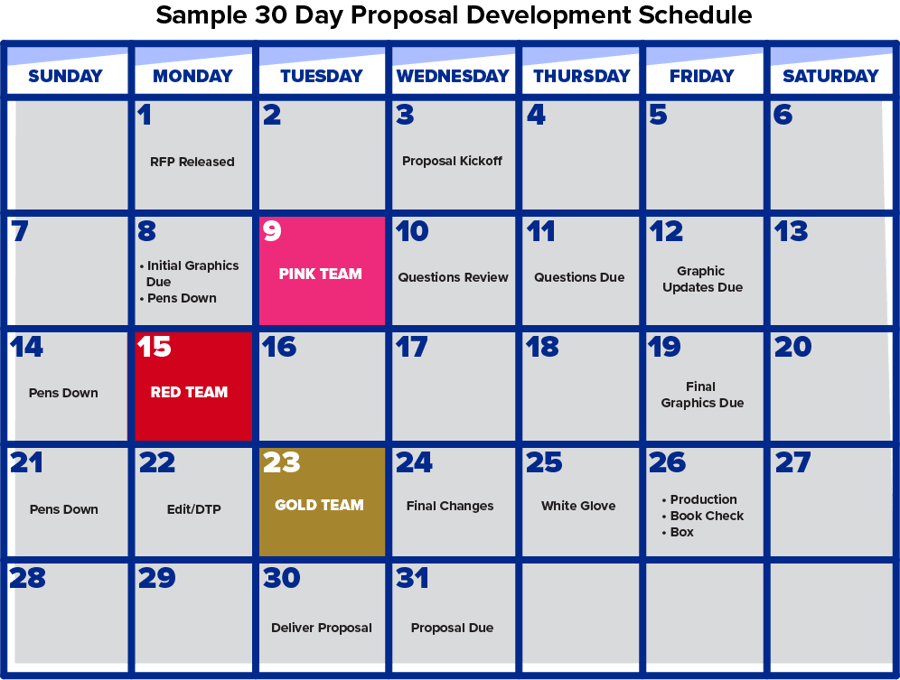
Proposal Team Members: A list of the assigned proposal team members, including their contact information and roles on the proposal, ensures all participants understand the roles and responsibilities of those involved in the proposal development process. It also serves as an easy point of reference when your team needs to reach out to one another. - Kickoff Meeting Details: A Kickoff meeting is a critical milestone in the proposal development schedule the provides information, direction, and motivation to the proposal team. During a Kickoff meeting, the team will cover introductions and roles, an overview of the opportunity and competition, an overview of the win strategy and opportunity intelligence, a review of the Proposal Plan, including the schedule and milestones/deadlines, and the proposal development process. Include pertinent Kickoff meeting information in your Proposal Plan, such as the Date/Time, meeting link or call-in information, and attendee list.
- Color Team Review Details (Review Kickoffs and Debriefs): Include the Color Team Reviews that are listed in your proposal schedule—the number of reviews is dependent upon the time available to respond to the RFP. For each review in your schedule, list both the Kickoff and debrief dates, the reviewers or participants for each review, and access or any links to the documents and materials the reviewers need to complete their review. It is also helpful to include the level of completion or content quality for each review within your Proposal Plan so writers and reviewers are working toward the same expectations.
- Past Performance References and Relevant Projects: This list is helpful for writers to refer to when developing section content and looking for relevant examples of the work and approach being described. Also, create a list of other projects that are relevant to the opportunity scope. Even if a project is not used as a Past Performance reference, it can be used in other proposal sections as an additional example or proof of your company’s ability to successfully perform the work associated with the contract
- Key Personnel and Resumes: Maintaining a list of Key Personnel and their resumes, as well as any other personnel and resumes that will be included with the proposal, is a helpful way of tracking and ensuring all required and key roles are filled.
- Subcontractors/Teaming Partners: Create and maintain a list of any subcontractors or teaming partners proposed to support your team upon award. Be sure to also include a list of tasks the subcontractors or teaming partners will be responsible for executing on the contract, which makes duties/assignments clear for the writing team as they build out their sections.
- Important Proposal Links: These links serve as a quick and easy reference for proposal team members to find the most pertinent information and documents they need to support the proposal development phase or complete their assigned tasks.
2. Gathering Strategic Components and Opportunity Intelligence
The strategic components of your proposal, gathered during the Capture or pre-RFP phase of the opportunity lifecycle, are the major points or themes you want the audience or evaluator to take away after reading. These components are developed using information and intelligence gathered from discussions with your team—Capture, Operations, and Business Development. The Capture Manager and Program Operations team (for incumbents), as applicable, meet with the customer to gather intelligence, understand the upcoming contract, and help shape the RFP requirements.
These interactions and conversations help your team understand the customer’s wants, needs, pain points, and desired outcomes for the new contract period. The strategic components help shape and inform the messaging and writing in your proposal while highlighting your understanding of the customer and emphasizing yourself/ your company as an ideal offeror.
There are two categories of discussions from which to gather strategic components and opportunity intelligence:
- Opportunity Background and Understanding
- Strategy and Win Messaging
From the Opportunity Background and Understanding discussions, your team should talk about and compile answers to the following questions:
- Why did the customer issue this solicitation?
- What does the customer envision for this contract? What are the customer’s objectives, desired outcomes, and vision for the program?
- What does the Notional Winner Profile (hypothetical ideal offeror) look like for this contract?
- Who is your competition? What are your competitor’s perceived strengths and how can you mitigate those? What are your competitor’s perceived weaknesses and how can you ghost those in your response?
- What are your company’s strengths and how do you plan to emphasize those? What are your company’s weaknesses and how do you mitigate those? What other opportunities are there to emphasize or promote your company, solution, or offering? What are potential threats your company may encounter and how do you mitigate those?
From the Strategy and Win Messaging discussions, focus on gathering answers and developing responses to address the following questions:
- What are the customer’s issues, concerns, hot buttons?
- What part of your solution, approach, and features addresses those issues?
- What about your solution, approach, and features benefit the customer? Why is your offering important to the customer? Why should the customer care?
- What proof or data points can you provide that support your features and benefits?
- Which features and benefits are discriminators, and which are differentiators?
Answering these questions helps your team determine the most important details which enable you to create customer-focused, compelling language using the win messaging and win themes. These themes and messaging can be highlighted and enhanced throughout the proposal using key graphics that depict your solution, approach, and Concept of Operations (CONOPS), proposal design, and other visuals (icons, callout boxes, etc.).
3. Aligning the Proposal Structure to the Solicitation Requirements
The final piece of a Proposal Plan is creating the structure or outline of your response to the RFP. By creating a clear outline that aligns with the solicitation requirements, writers have a clean starting point to develop their content which results in an easy-to-understand narrative for readers and evaluators to review.
The Proposal Manager analyzes the solicitation and derives the proposal structure or outline from the following RFP requirements:
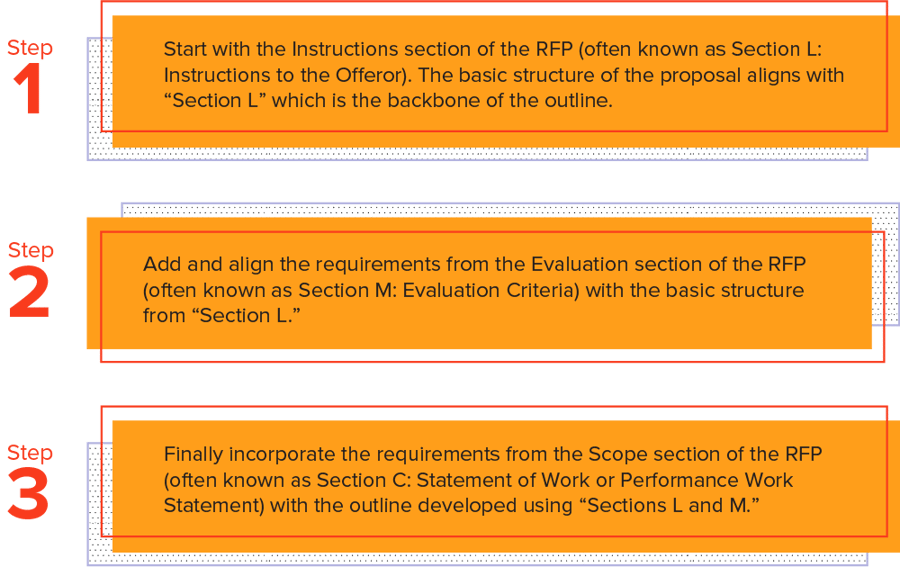
The requirements provide the foundation for developing the high-level outline within the Proposal Plan. The outline in the Proposal Plan cross-references the proposal sections to their related RFP requirements and applicable RFP sections and numbering. The Proposal Manager uses the Proposal Plan to manage the proposal structure and help ensure a compliant response.
The Proposal Plan is also used to inform the writing templates/annotated outlines and the writers will develop their responses within the templates. Writers use the Proposal Plan as a reference tool to understand the various RFP requirements for their assigned sections and how their sections will be structured or organized. You can use proposal numbering and RFP reference numbers throughout your writing templates to clearly map sections or headers to the RFP requirements. This makes evaluating your proposal especially easy for the evaluator.
Using the finalized proposal outline, the Proposal Manager and appropriate team members (Capture, Operations, Business Development) can plan where the strategic information will fall in the proposal and indicate which themes and messaging are vital to each section. This exercise gives the writers additional insight into the direction of their assigned sections and the major points or themes that must be addressed in their writing.
Implementing and Maintaining a Proposal Plan
The Proposal Plan can be developed using a draft RFP and updated once the final RFP is released, making the best use of the Capture/pre-RFP phase. The creation, implementation, and maintenance of a Proposal Plan is a team effort. The Proposal Manager is responsible for developing and updating the Proposal Plan throughout the opportunity lifecycle. The Capture Manager, with the support of the Operations and Business Development team members, is responsible for transferring and relaying opportunity information and customer intelligence to the proposal team.
The Proposal Manager works with all team members to incorporate the strategic components into the Proposal Plan and gets the Capture Manager’s approval of the plan before presenting it to the team. The proposal team uses the plan to develop the proposal response, which is important to ensuring continuity of language, messaging, and execution of the proposal process.
The Proposal Plan is a living document, which means as additional information is released by the customer, such as Questions and Answers (Q&A) and Amendments, and provided to the team by the Capture Manager, the Proposal Manager updates the plan accordingly. Solution and storyboard sessions are additional ways to incorporate important intelligence and feedback from the team into the Proposal Plan.
During Color Team Reviews, it is a best practice to review the proposal against the Proposal Plan to ensure sections are following the required structure, as well as direction and messaging provided by the Capture Manager, Operations, and Business Development team members.
Conclusion
A Proposal Plan is a best practice and highly effective tool that ensures your proposal remains compliant, is easy to follow and evaluate, and focuses on the customer, which helps you develop a successful response.
Following the equation detailed above, you can tailor or create a Proposal Plan that best suits your company and aligns with your proposal development process.



